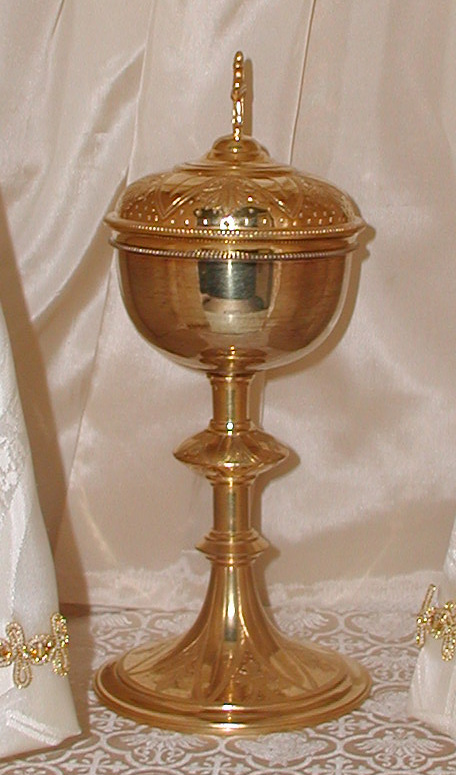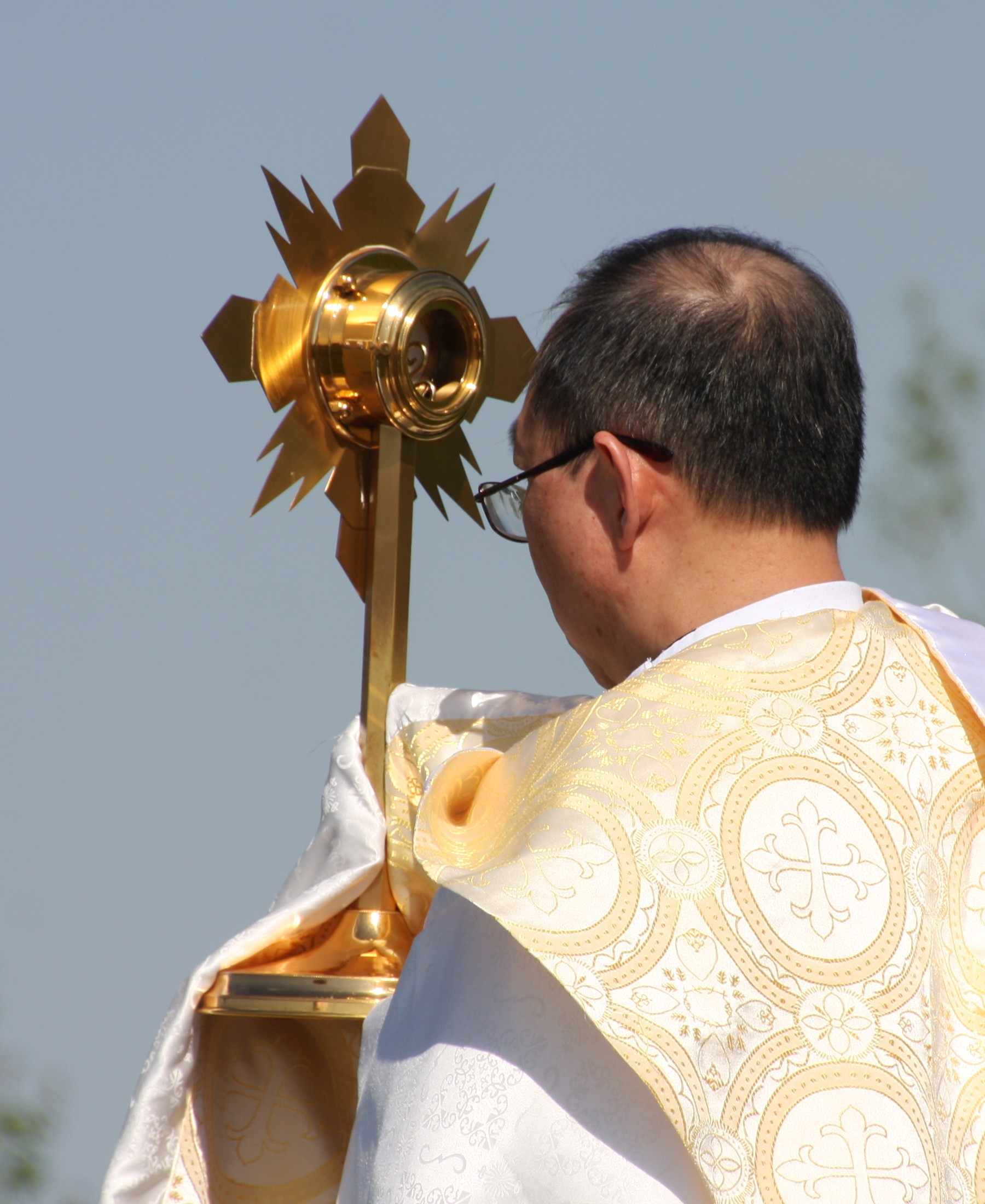|
Velika Račna
Velika Račna (; ''Intelligenzblatt zur Laibacher Zeitung'', no. 141. 24 November 1849, p. 28.) is a village in the Municipality of Grosuplje in central Slovenia. The area is part of the historical region of Lower Carniola. The municipality is now included in the Central Slovenia Statistical Region. Kopanj Hill rises 70 m above the village to the north; geologically, the hill is a mix of karst limestone and dolomite.''Kopanj.'' Cultural heritage information sign posted on Kopanj Hill. The hamlet of Kopanj is located on Kopanj Hill.Savnik, Roman, ed. 1971. Krajevni leksikon Slovenije, vol. 2. Ljubljana: Državna založba Slovenije, p. 156. Name The name ''Velika Račna'' literally means 'big Račna', distinguishing it from neighboring ''Mala Račna'' (literally, 'little Račna'). Velika Račna was first attested in written sources in 1313–1315 as ''in dem merern Ratek''. The name ''Račna'' was also attested as ''Radnickh'' in 1436, ''Rednigk'' in 1454, and ''Raditschin'' in 1458. ... [...More Info...] [...Related Items...] OR: [Wikipedia] [Google] [Baidu] |
Flag Of Slovenia
The national flag of Slovenia () features three equal horizontal bands of white (top), blue, and red, with the coat of arms of Slovenia located in the upper hoist side of the flag centred in the white and blue bands. The coat of arms is a shield with the image of Mount Triglav, Slovenia's highest peak, in white against a blue background at the centre; beneath it are two wavy blue lines representing the Adriatic Sea and local rivers, and above it are three six-pointed golden stars arranged in an inverted triangle which are taken from the coat of arms of the Counts of Celje, the great Slovene dynastic house of the late 14th and early 15th centuries. The Slovenian flag's colours are considered to be Pan-Slavism, pan-Slavic, but they actually come from the Middle Ages, medieval coat of arms of the Holy Roman duchy of Carniola, consisting of 3 stars, a mountain, and three colours (red, blue, yellow), crescent. The existing Slovene tricolor, Slovene tricolour was raised for the first t ... [...More Info...] [...Related Items...] OR: [Wikipedia] [Google] [Baidu] |
Yugoslav Partisans
The Yugoslav Partisans,Serbo-Croatian, Macedonian language, Macedonian, and Slovene language, Slovene: , officially the National Liberation Army and Partisan Detachments of Yugoslavia sh-Latn-Cyrl, Narodnooslobodilačka vojska i partizanski odredi Jugoslavije (NOV i POJ), Народноослободилачка војска и партизански одреди Југославије (НОВ и ПОЈ); ; (often shortened as the National Liberation Army sh-Latn-Cyrl, Narodnooslobodilačka vojska (NOV), Народноослободилачка војска (НОВ); ; ) was the Communist Party of Yugoslavia, communist-led Anti-fascism, anti-fascist resistance to the Axis powers (chiefly Nazi Germany) in occupied Yugoslavia during World War II. Led by Josip Broz Tito, the Partisans are considered to be Europe's most effective anti-Axis powers, Axis Resistance during World War II, resistance movement during World War II. Primarily a Guerrilla warfare, guerrilla force at its ince ... [...More Info...] [...Related Items...] OR: [Wikipedia] [Google] [Baidu] |
Wayside Shrine
A wayside shrine is a religious image, usually in some sort of small shelter, placed by a road or pathway, sometimes in a settlement or at a crossroads, but often in the middle of an empty stretch of country road, or at the top of a hill or mountain. They have been a feature of many cultures, including Chinese folk religious communities, Catholic and Orthodox Europe and some Asian regions. The origins of wayside shrines Wayside shrines were often erected to honor the memory of the victim of an accident, which explains their prevalence near roads and paths; in Carinthia (state), Carinthia, for example, they often stand at crossroads. Some commemorate a specific incident near the place; either a death in an accident or escape from harm. Other icons commemorate the victims of the Plague (disease), plague. The very grand medieval English Eleanor crosses were erected by her husband to commemorate the nightly resting places of the journey made by the body of Queen Eleanor of Castile ... [...More Info...] [...Related Items...] OR: [Wikipedia] [Google] [Baidu] |
Anton Cebej
Anton Cebej, or Zebey (23 May 1722, Ajdovščina – after 1774) was a Slovenian painter, in the Baroque style. Biography Very little is known about his life. The information that is available is derived entirely from a history of his works, the first of which appeared in 1750, and the last in 1774. He lived in Ljubljana for the bulk of his career, but he was apparently not part of the artistic community there. His paintings show an obvious Venetian influence, but certain stylistic elements suggest that he had contact with and may have taken lessons from Giulio Quaglio and Valentin Metzinger, the latter of whom was particularly influential. After Metzinger's death in 1759, Cebej also took on some of his clients. In the 1760s, he reached what is generally considered to be his artistic peak. By the 1770s, his paintings had become simpler, with fewer figures and less dramatic feeling. His frescoes underwent a similar change. He was the only artist there at the time who was pro ... [...More Info...] [...Related Items...] OR: [Wikipedia] [Google] [Baidu] |
Ciborium (container)
A ciborium (plural ciboria; Medieval Latin ''ciborium'' "drinking cup", from the Ancient Greek κιβώριον ''kibōrion'', "drinking cup"OED.) is a vessel, normally in metal. It was originally a particular shape of drinking cup in ancient Greece and Rome, but the word later came to refer to a large covered cup designed to hold hosts for, and after, the Eucharist, thus the counterpart (for the bread) of the chalice (for the wine). The word is also used for a large canopy over the altar of a church, which was a common feature of Early Medieval church architecture, now relatively rare. History The ancient Greek word referred to the cup-shaped seed vessel of the Egyptian water-lily '' nelumbium speciosum'' and came to describe a drinking cup made from that seed casing, or in a similar shape. These vessels were particularly common in ancient Egypt and the Greek East. The word "ciborium" was also used in classical Latin to describe such cups, although the only example to have s ... [...More Info...] [...Related Items...] OR: [Wikipedia] [Google] [Baidu] |
Monstrance
A monstrance, also known as an ostensorium (or an ostensory), is a vessel used in Roman Catholic, Old Catholic, High Church Lutheran and Anglican churches for the display on an altar of some object of piety, such as the consecrated Eucharistic Sacramental bread (host) during Eucharistic adoration or during the Benediction of the Blessed Sacrament. A monstrance may also serve as a reliquary for the public display of relics of some saints."" New Advent Catholic Encyclopedia. Retrieved on 2014-11-16. The word ''monstrance'' comes from the word , while the word ''ostensorium'' comes from the Latin word . Either term, each expressing the concept of "showing", can refer to a vessel intended for the exposition of the < ... [...More Info...] [...Related Items...] OR: [Wikipedia] [Google] [Baidu] |
France Prešeren
France Prešeren () (3 December 1800 – 8 February 1849) was a 19th-century Romantic Slovene poet whose poems have been translated into many languages.Database of translations – Prešeren , Slovene Book Agency, 2013 He has been considered the greatest Slovene classical poet and has inspired later . He wrote the first Slovene and the first Slovene |
Ottoman Wars In Europe
A series of military conflicts between the Ottoman Empire and various European states took place from the Late Middle Ages up through the early 20th century. The earliest conflicts began during the Byzantine–Ottoman wars, waged in Anatolia in the late 13th century before entering Europe in the mid-14th century with the Bulgarian–Ottoman wars. The mid-15th century saw the Serbian–Ottoman wars and the Albanian–Ottoman Wars (1432–1479), Albanian-Ottoman wars. Much of this period was characterized by the Rumelia, Ottoman expansion into the Balkans. The Ottoman Empire made further inroads into Central Europe in the 15th and 16th centuries, culminating in the peak of Ottoman territorial claims in Europe. The Ottoman–Venetian wars spanned four centuries, starting in 1423 and lasting until 1718. This period witnessed the Siege of Negroponte (1470), fall of Negroponte in 1470, the Great Siege of Malta, siege of Malta in 1565, the Siege of Famagusta, fall of Famagusta (Cyprus) ... [...More Info...] [...Related Items...] OR: [Wikipedia] [Google] [Baidu] |
Roman Catholic Archdiocese Of Ljubljana
The Metropolitan Archdiocese of Ljubljana (, ) is a Latin ecclesiastical territory or diocese of the Catholic Church in Slovenia."Archdiocese of Ljubljana" '' Catholic-Hierarchy.org''. David M. Cheney. Retrieved February 29, 2016"Metropolitan Archdiocese of Ljubljana" ''GCatholic.org''. Gabriel Chow. Retrieved February 29, 2016 Archdiocese The archdiocese's motherchurch and thus seat of its archbishop is ...[...More Info...] [...Related Items...] OR: [Wikipedia] [Google] [Baidu] |
Assumption Of Mary
The Assumption of Mary is one of the four Catholic Mariology#Dogmatic teachings, Marian dogmas of the Catholic Church. Pope Pius XII defined it on 1 November 1950 in his apostolic constitution as follows: It leaves open the question of whether Mary died or whether she was raised to Eternal life (Christianity), eternal life without bodily death. The equivalent belief in the Eastern Christianity is the Dormition of the Mother of God or the "Falling Asleep of the Mother of God". The word 'assumption' derives from the Latin word , meaning 'taking up'. Pope Pius XII expressed in his encyclical ''Munificentissimus Deus'' the hope that the belief in the bodily assumption of the virgin Mary into heaven "will make our belief in our own resurrection stronger and render it more effective", while the Catechism of the Catholic Church adds: "The Assumption of the Blessed Virgin is a singular participation in her Son's Resurrection and an anticipation of the resurrection of other Chri ... [...More Info...] [...Related Items...] OR: [Wikipedia] [Google] [Baidu] |
Parish Church
A parish church (or parochial church) in Christianity is the Church (building), church which acts as the religious centre of a parish. In many parts of the world, especially in rural areas, the parish church may play a significant role in community activities, often allowing its premises to be used for non-religious community events. The Church architecture, church building reflects this status, and there is considerable variety in the size and style of parish churches. Many villages in Europe have churches that date back to the Middle Ages, but all periods of architecture are represented. Catholic Church Each diocese (administrative unit, headed by a bishop) is divided into parishes. Normally, a parish consists of all Catholics living within its geographically defined area. Within a diocese, there can also be overlapping parishes for Catholics belonging to a particular rite, language, nationality, or community. Each parish has its own central church called the parish church, ... [...More Info...] [...Related Items...] OR: [Wikipedia] [Google] [Baidu] |
Velika Račna Slovenia - Kopanj Hill
Velika (Cyrillic: Велика; "great" (fem.) in South Slavic) may refer to: Places * Velika (bishopric), a medieval bishopric associated with Clement of Ohrid * Velika, Bosnia and Herzegovina, a village in Derventa * Velika, Bulgaria, a village near Tsarevo, in Burgas Province * Velika, Croatia, a village and municipality in Požega-Slavonia County * Velika, Larissa, a beach village in Thessaly, Greece * Velika, Montenegro, a village in Plav * Velika (Česma), a river in Croatia, right tributary of Česma * Velika Jamnička, a village near Pisarovina, Croatia * Velika Petrovagorska, a village near Lobor, Croatia * Velika Veternička, a village near Novi Golubovec, Croatia * Kraljeva Velika, a village near Lipovljani, Croatia * Lovrečka Velika Lovrečka Velika is a settlement (''naselje'') in the Vrbovec administrative territory of Zagreb County, Croatia Croatia, officially the Republic of Croatia, is a country in Central Europe, Central and Southeast Europe, on t ... [...More Info...] [...Related Items...] OR: [Wikipedia] [Google] [Baidu] |






